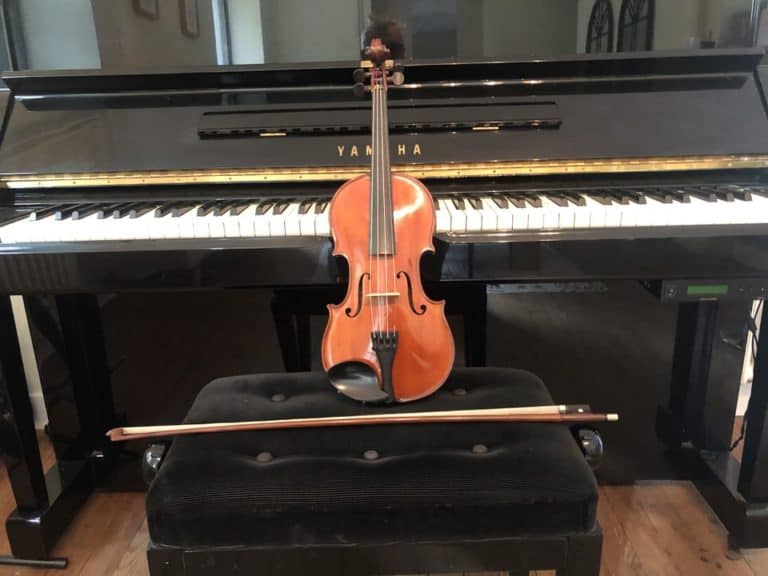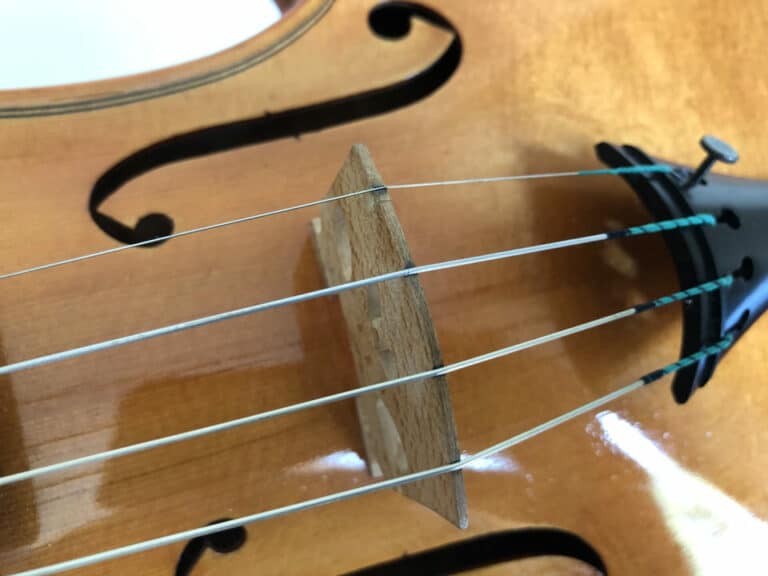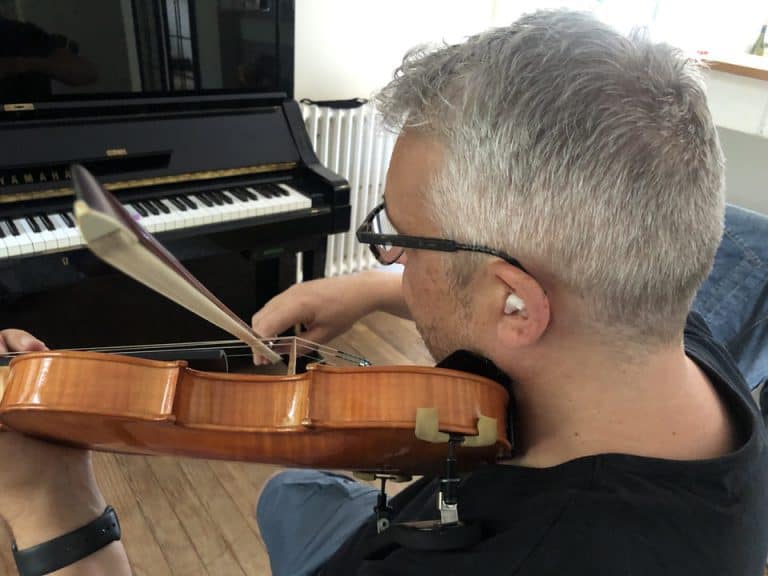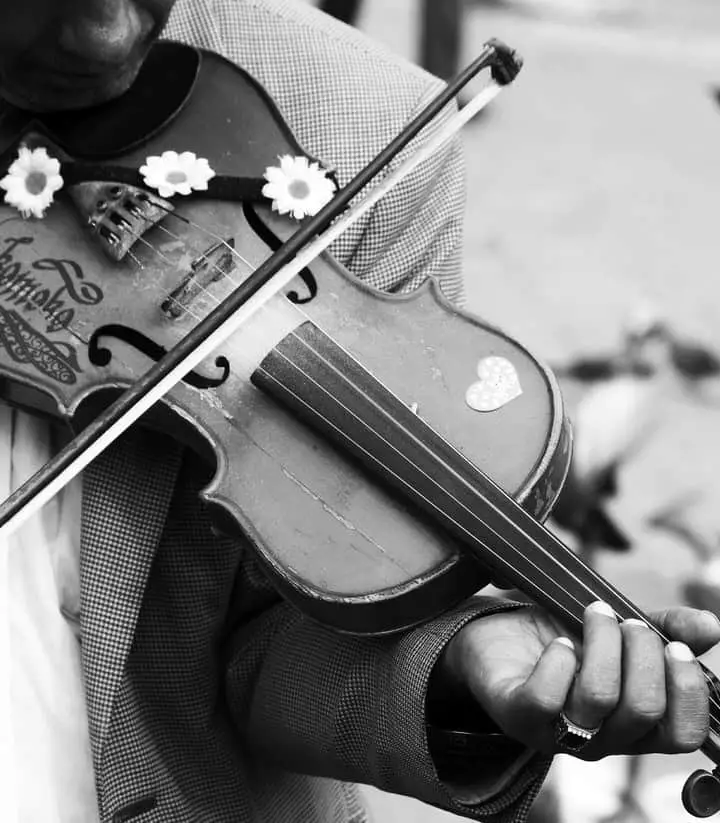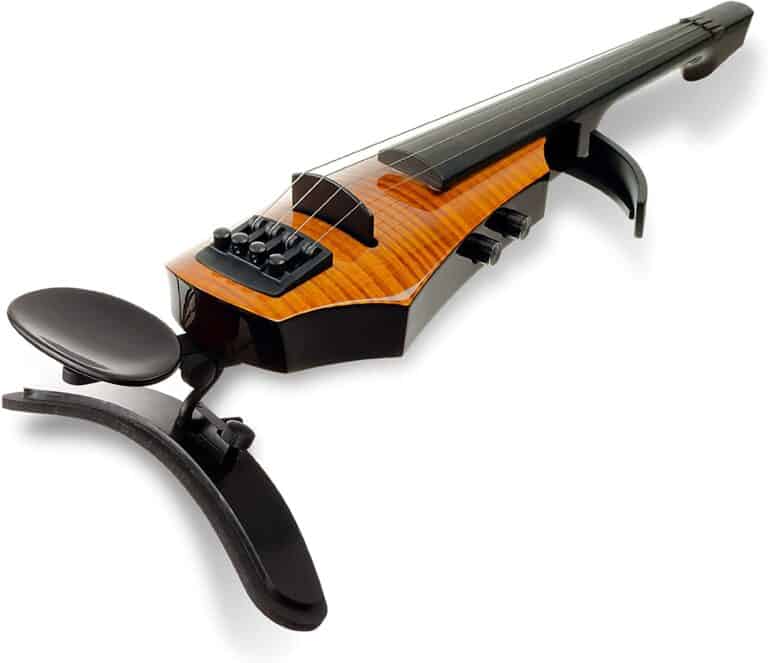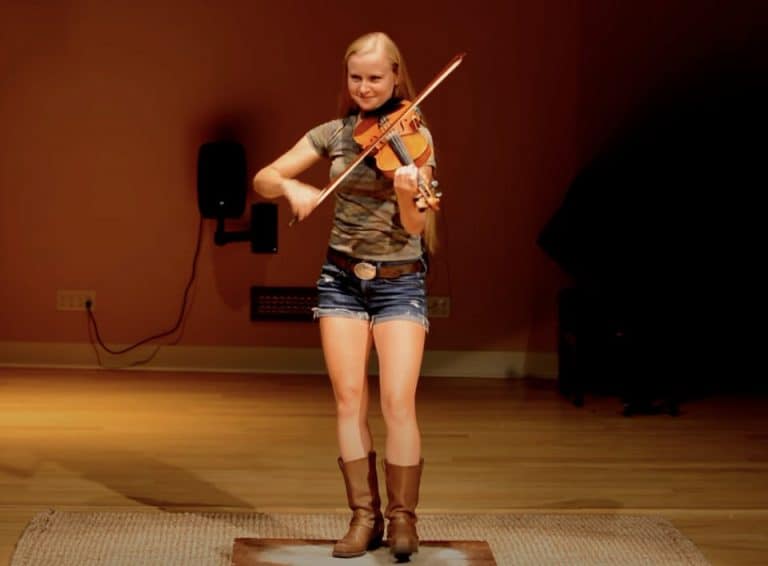Travel with your Violin with Great Peace of Mind
It can be a bit nerve-racking to travel with your most prized violin. So many things can go wrong… theft, heat, shocks.
Choose good insurance and a sturdy violin case. Loosen your strings and bow hair. Keep your violin in a climate-controlled room if possible. Monitor hygrometry changes and responds with silica gel desiccant or a Dampit to humidify your violin. Then, practice with a mute and ask for a safe room at the hotel you have chosen wisely.
There are a lot of factors you can manage at home that aren’t always in your control once you hit the road, but fear not– plenty of professionals do this kind of thing regularly and have kept their instruments alive for years, and you can too by taking some simple precautionary steps to keep your violin safe while traveling.
Violin Insurance
Before leaving, if your instrument is expensive, check with your insurance company how well insured you are against theft. If you are not, you should reconsider your insurance policy and purchase another insurance or option for your existing insurance. When I traveled a lot, I had ensured my best violin, but not the other ones, less pricy, that I have. Now that I travel less, I have downgraded my policy. So this is something you can adjust over time. The main thing is that your insurer knows that you travel. Then you should be properly covered in case of a theft.
What case to choose
Make sure your violin case is up for the task before you begin your travel. You’ll want something rugged, well-made, and snug. Case material is dependent on a number of factors specific to your use case, so consider whether you want something rock-solid and heavy or durable and light. Go for something weatherproof or perhaps even air-tight, and try to make room in the budget to buy a case with some quality suspension, a feature that uses some variation of interior material to protect some of your violin’s more sensitive parts from taking the impact from any jostling of the case. It’s really worthwhile to invest in a solid case rather than risk something going loose and wreaking havoc on your violin instead.
If you want to go all out on a hard case, one of the most high-end cases you can get your hands on is a Musafia. Hand-crafted in Cremona, Italy, this brand has been trusted by the most elite performers for ages. They’re thoroughly tested for durability before being sold and come in all sorts of designs that cut no corners, being both incredibly rugged and aesthetically pleasing. They come with just about anything you could ask from a case, as well as some features you probably wouldn’t have even thought to include in a case. The Luxury Classic Dart S3011 is a fine example of this and just one of their many offerings to consider.
If you’re after something affordable and reputable, check out Bobelock [https://www.bobelock.com/cases/violin/violincases.html] violin cases. Their cheaper cases don’t come with a lot of bells and whistles, but the brand does come with a great reputation spanning over a century and countless anecdotes of approval. The Bobelock 1047 in particular is a hefty case that comes with suspension and a built-in hygrometer at a reasonable price on Amazon.
Last thing, when you travel you usually walk a lot between buses, taxies, trains and planes. This instrument case back pack strap is shoulder padded for comfort and is a cheap and clever add-on to your violin case. It helps you carry your violin or viola with less pain and effort in those circumstances.
Loosen your violin’s strings and your bow’s hairs
In order to compensate for any potential warping which may arise throughout your travel, you should loosen the violin’s strings before storing it. Both the wood and the strings are subject to their atmosphere and can expand or contract depending on a number of factors, so to prevent any such variations from causing any complications with your violin (and to make sure your sound-post doesn’t take a trip through the back of your violin), loosen the strings before placing your violin in its case. You should also loosen your bow’s hairs, of course, for the same reason you do whenever you’re not playing.
Never store your violin in your trunk while traveling
Whether you’re on a bus, a train, or driving your own car, you do not want to take a chance on leaving your violin in a volatile place like a trunk. If you travel with your violin stored out of sight, you’re throwing its temperature control out the window and instead subjecting it to what’s more often than not an unregulated atmosphere. On a hot day, it gets the worst heat in the whole vehicle. On a cold day, it gets the worst cold. It could be dry back there, or it could be humid– it’s not up to you. Even if the trunk happens to have a good atmosphere for storing a violin (don’t count on it), you’re not even sure it’s going to be there if you don’t secure it well, as it’s at a much higher risk of being stolen than if you were to just hang onto it yourself. Keep it nearby and treat it with the care it requires at any other location.
For the same reasons, don’t leave your violin unattended in your car. You don’t know who might come by uninvited, and you do not want to leave it exposed to the elements. Cars heat up and cool down very, very quickly– don’t take the risk.
My old teacher used to compare his violin to a child that you would never leave in the car alone but bring with you, or leave on the floor instead of comfortably installed on a chair!
Keep your violin in climate-controlled rooms at all costs
As stated before, when you travel with a violin, it’s subject to whatever atmosphere you’re in. It’s important to prepare your violin for weather variations during your travel, but what would be even better is to avoid atmospheric complications in the first place. Obviously, you’re not in charge of whether it’s dry or humid outside, but optimally, you do have a say in how the weather feels inside. By all means, do what you can to maintain a healthy environment where you’re staying to keep your violin in good shape.
The stability of the environment is crucial, as the violin can adapt to a certain temperature or hygrometry, put changing all the time these factors are another story.
Now, depending on the part of the world you travel to, the air can be too dry or too humid. Remember that those old Italian luthiers didn’t design string instruments with around-the-world tours in mind! But there are a couple of ways to preserve your instrument integrity and playability without too much effort.
Defend your violin against hygrometry variations
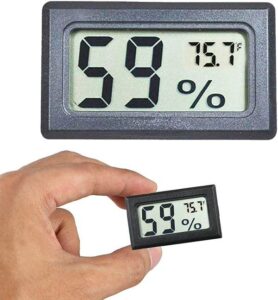
The violin is a natural instrument: it is made out of wood. And wood expands with humidity and retracts when the air becomes dry. This can have many consequences on the setup of the instrument, the tension of the strings on the bridge. The sound can be affected, and even cracks can happen to the body of the instrument. In eastern countries, the extremely humid atmosphere can cause the glue to melt and the body and the ribs and back to open slightly!
So the first thing you need if you travel far or in different climates is a small hygrometer to carry in your violin case if it didn’t come with one. This one has a really small form factor and is cheap on Amazon. It fits easily in a violin case.
Fight humidity in your violin case with dehumidifiers
If you’re going somewhere where it’s humid, take along a dehumidifier. There’s a number of products out there that can be used to reduce your instrument’s humidity if necessary. The simpler I’ve found to use is for example these silica gel packets, which have a good desiccant action and are easy to fit in my case. Be careful about this, though, as you can easily damage your instrument if you overcompensate for the excess moisture and wind up instead of drying the instrument out. In order to ensure your instrument maintains an optimal moisture level, use a hygrometer to monitor said moisture level in your violin.
Fight dry air with humidifiers
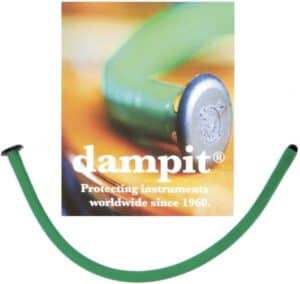
On the other hand, if you’re expecting it to be dry where you’re going, get yourself a humidifying product, such as the well-known Dampit. A Dampit does what you would expect: it gradually releases moisture into your instrument to avoid any humidity problems. Just let your Dampit in a glass of water before inserting it into your violin. Be sure to remove the excess water, of course, by carefully wiping it with a dry towel.
Just as you should be careful not to overdo it with the dehumidifier, be sure not to over-humidify it either. Again, your best bet is to use a hygrometer to keep an eye on your violin’s humidity levels and have the necessary materials on hand to counteract them as needed.
Practicing your violin in a hotel
While traveling with a violin, naturally you’re going to want to practice, but your fellow hotel guests might not be as eager about the notion as you are. In the interest of being considerate towards the other guests, make sure to bring a mute with you, and maybe even consider some other routes to further dampen the volume of your instrument.
If you have an electric violin, you can play without too much noise, as I have detailed in this post. But if you need to practice with your acoustic instrument, then you need to choose the heaviest mute such as a brass mute. I am pretty happy with this one on Amazon, not too expensive considering how practical it is.
It’s probably a good idea to save your playing for daylight hours as well. If it ends up being a problem, the worst-case scenario is someone from the front desk asks you to stop, so don’t be afraid to practice while you’re staying at a hotel.
Hotel safety for your pricy violin
Yes, you need to be considerate of your violin even when it comes to choosing your hotel. Every problem previously mentioned can be a risk in a hotel room if not considered ahead of time. If you can help it, choose a hotel located someplace safe. To mitigate any risk of theft, try to get a room on the higher levels of the hotel. If you’re concerned about improper care or bad intentions from hotel staff, opt to decline housekeeping service during your stay. Depending on the environment, it may also help to keep your violin relatively close to the room’s AC unit for temperature and humidity regulation as needed. As usual, take appropriate measures to monitor these factors and adjust them accordingly.
If you can travel with a cheap instrument or a cheap electric instrument, then things will be easier in all respects. But if you need to bring your pricy acoustic violin, then be extra careful. Ask if the hotel has a big safe in which you could store your instrument. Or if the manager has a safe room for valuables. You might be offered a way to be reassured with special consideration.
Basically, do whatever you can to monitor your violin’s condition when you travel just as you do when you’re at home. Plan your journey ahead of time to avoid any subpar conditions for your violin, and make sure you have the materials on hand to keep it in good shape should any issue arise. Other than that, hit the road, and get ready to ace your next performance.

